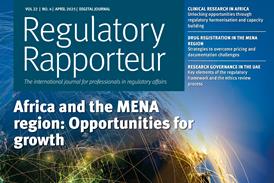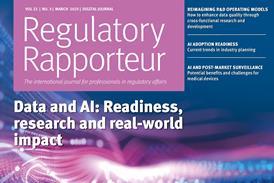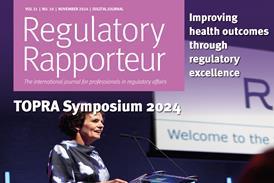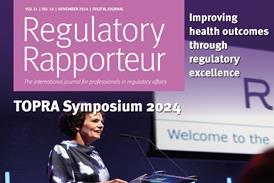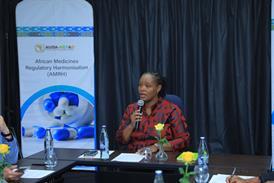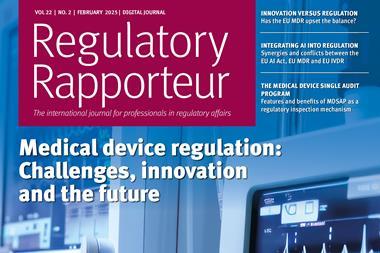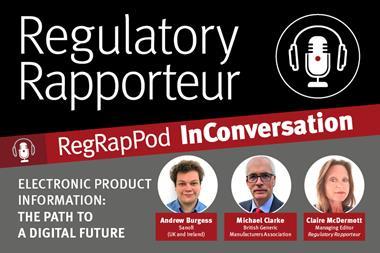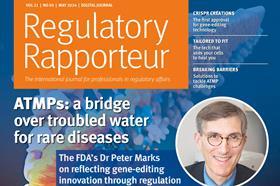
Regulatory Rapporteur
May 2024 | Volume 21 | No.5

It seems like a recurring theme to start our advanced therapy medicinal products (ATMPs) issue with a familiar message: we are undoubtedly entering a new paradigm of healthcare thanks to these novel and innovative technologies. It is something that was as true in last year’s editorial for the ATMP-focused issue as it is today. However, although the message may sound familiar, the differences in ATMP offerings between 2023 and 2024 are significant.
What we first thought of as novel, innovative treatments now seem relatively standard in comparison to today’s advanced therapy offerings, and the landscape of the future looks set to change even more. New categories of advanced therapy medicines are emerging, most notably gene editing technologies, which offer the potential to cure disease and provide real hope to patients suffering from life-threatening or life-altering diseases.
Although there is much excitement, investment and promise with these novel technologies (as there should be) we must proceed with caution. Balancing the inevitable concerns over demonstrating safety without creating unnecessary barriers to patient access is not a new challenge, but it remains a significant one for developers and regulators alike.
Gene-editing technologies add further complexities to this conundrum due to the potential for permanent changes to a patient’s DNA, either deliberately or as a potentially catastrophic side effect. On the one hand, gene editing could offer life-saving treatment that has never previously been possible, but on the other hand it could potentially induce unintended and possibly even life-threatening consequences.
What a challenge then for the regulator who has the responsibility of giving the green light to these treatments. There is an even greater emphasis on collaboration, information sharing and keeping abreast of industry developments. I had the pleasure of meeting with Dr Peter Marks, Director of the US Food and Drug Administration’s (FDA) Center for Biologics Evaluation and Research (CBER), along with my colleague Dr Katherine Bowen, to discuss these challenges.
The interview offers a real insight into current thinking at the FDA and CBER, in addition to the direction of the agency when thinking about cell and gene therapies. It was a real career highlight to interview Dr Marks, who was both insightful and engaging. It is very clear to see the FDA is committed to supporting innovation, and I hope that you enjoy reading the interview.
It is fair to say that 2023 was another landmark year for ATMPs. There have been so many updates that it is difficult to keep up with the developments. However, it would be remiss not to mention the historic approval of the first gene-editing technology, Casgevy or to give it its full name, exagamglogene autotemcel. It is a CRISPR/Cas9-based technology from CRISPR Therapeutics and Vertex Pharmaceuticals, designed to treat the rare diseases ß- thalassemia and sickle cell anaemia.
First approved by the UK’s Medicines & Healthcare products Regulatory Agency (MHRA) in November 2023 and closely followed by the European Medicines Agency (EMA) and FDA approvals in early 2024, Tom Oakley provides a detailed insight into this landmark milestone. Not only is this an interesting case study as the first ever gene-editing approval, but it could also provide insight into agency thinking for future approvals of similar technologies.
A continuing theme with all medicines, but especially advanced therapies, is the need to identify and mitigate potential adverse effects. This can be significant in the case of gene therapies where secondary malignancies and other off-target effects may be experienced. It is therefore essential for regulators and developers to continue monitoring the use of these therapies in the post-licensing phase and introduce any changes to labels as required in order to keep patients safe.

This year has already seen a high-profile example of such a post-licensing change, with a ‘black box’ class warning applied to all B and T-cell immunotherapies in the US and a Pharmacovigilance Risk Assessment Committee review enacted in the EU. Prior to licensure and considering the developmental requirements of these medicines, Ivana Turek discusses chimeric antigen receptor T-cell (CAR-T) immunotherapies and the specific clinical trial application procedure in the EU.
The last focus article in this month’s issue covers an oft-forgotten part of medicines development: pricing and reimbursement. As regulatory affairs professionals, we can often lose sight of the final hurdle to development, instead focusing on the all-important clinical development phases and of course, the granting of the licensure. However, the longevity of medicines, the scalability and potential future supply to patients are all critical elements which Dr Jörg Schneider and team discuss. This article is a great reference point and discusses an area of regulation that often gets forgotten in among the initial excitement of approvals and the promise that new medicines (particularly innovative ones) bring.
May’s issue also has three other articles. First, we have a piece on the European Authorised Representative Association (EAAR) from Ludger Moeller who is EAAR’s chairman. Ludger is also President of service provider MDSS and writes about the developing role of Authorised Representatives and their clients, following the implementation of the new Medical Devices Regulation.
We also have a submission from authors Shivam Vashisth and Marion Schoeffel, which investigates how to navigate the process, complexities and challenges associated with EU-CTR transition applications.
And lastly there is the regular, bi-annual, tabular Medical Device Standards round-up prepared by Mehryar Behizad in collaboration with Charlotte Holleran.


